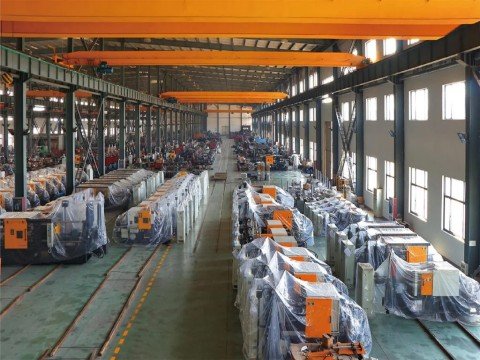Critical heat treatment features in die casting are utilized to enhance mechanical properties, dimensional stability, and corrosion resistance through controlled heating and cooling cycles.
In the die-casting production process, heat treatment is a crucial means to improve mold performance and extend its service life.
By precisely controlling the heating and cooling processes, heat treatment can optimize the microstructure of the material, thereby achieving superior mechanical properties and durability.
With the ever-increasing performance requirements of components in industrial sectors, heat treatment technology has become an indispensable part of the die-casting industry.
This article will discuss in detail the characteristics of heat treatment in die casting and its impact on the quality of the final product.

Core Value of Heat Treatment in Die Casting
- Mechanical Properties Enhancement
- Corrosion Resistance and Processability Improvement
Mechanical Properties Enhancement
Heat treatment can significantly improve the mechanical strength, fatigue strength, elongation, impact strength, and dimensional stability of die castings. For example, aluminum alloy die castings can optimize their mechanical properties through T6 heat treatment, increasing tensile strength by over 20% and hardness by 30-40%.
Corrosion Resistance and Processability Improvement
Heat treatment also enhances the corrosion resistance and processing performance of aluminum alloy die castings, such as machinability and weldability. Properly heat-treated castings develop a more stable oxide layer on the surface, significantly improving their corrosion resistance in harsh environments.

Detailed Heat Treatment Process Flow
- Basic Treatment Steps
- Surface Hardening Treatment
- Deformation and Crack Prevention
Basic Treatment Steps
Heat treatment of die casting molds typically includes annealing, quenching, and tempering steps. These processes impart the desired structure and properties to the mold by altering the steel’s microstructure. Precise control of temperature and time parameters at each stage is crucial, as it directly determines the final product quality.
Surface Hardening Treatment
Surface hardening techniques are particularly important for specific applications requiring high hardness and wear resistance. Processes such as carburizing, nitriding, or carbonitriding can significantly increase surface hardness and wear resistance while maintaining substrate toughness.
Deformation and Crack Prevention
Although rapid quenching can improve hardness and strength, it may also cause mold deformation and cracking. Therefore, tempering is usually required after quenching to relieve stress and stabilize the structure. Advanced processes like martempering or austempering can effectively control deformation.

Heat treatment features
Advanced Heat Treatment Technology Applications
- Vacuum Heat Treatment Technology
- T5 and T6 Heat Treatment Processes
Vacuum Heat Treatment Technology
To minimize surface blistering problems caused by gas entrapment, some high-vacuum die castings employ vacuum heat treatment technology. This process conducted in an oxygen-free environment effectively prevents material oxidation, resulting in cleaner surface quality.
T5 and T6 Heat Treatment Processes
T5 and T6 are commonly used heat treatment processes, where T5 involves water quenching and low-temperature aging treatment, while T6 includes solution heat treatment near the melting point, water quenching, and low-temperature aging treatment. The T6 process achieves superior comprehensive performance but at higher cost.

Material Selection and Heat Treatment Synergistic Optimization
- Material Science Innovation
- Effect of Heat Treatment on Microstructure
Material Science Innovation
Selecting appropriate materials and heat treatment processes is crucial for improving mold life. For example, using bainite-treated tool steels can improve a mold’s high-temperature strength and creep properties. New mold materials like improved H13 steel, combined with optimized heat treatment processes, can increase mold life by over 50%.
Effect of Heat Treatment on Microstructure
Different heat treatment processes lead to different microstructural changes, which affect the material’s mechanical properties and corrosion resistance. By precisely controlling process parameters, ideal grain size, phase composition, and precipitate distribution can be obtained.

HAICHEN’s Heat Treatment Innovations in Die Casting Machines
- Professional Technical Solutions
- Innovative Heat Treatment System Integration
Professional Technical Solutions
HAICHEN, as a professional die casting machine manufacturer, offers both hot chamber and cold chamber die casting machine models. HAICHEN’s die casting machine heat treatment technology effectively reduces residual stresses generated by rapid cooling during die casting. When paired with HAICHEN’s precision die casting machines, this results in minimal warping or cracking.
Innovative Heat Treatment System Integration
HAICHEN’s newly launched series of die casting machines integrate intelligent heat treatment monitoring systems that can monitor and adjust process parameters in real-time. Through advanced control algorithms, each casting achieves consistent heat treatment results, significantly improving product quality stability.

Heat Treatment Process Optimization Strategies
- Precise Control of Process Parameters
- Energy Consumption and Efficiency Balance
Precise Control of Process Parameters
Modern heat treatment processes emphasize precise control of temperature, time, and cooling rates. HAICHEN’s developed multi-stage heating system and intelligent quenching system can automatically optimize process curves according to different alloy materials and part structures, ensuring optimal heat treatment results.
Energy Consumption and Efficiency Balance
While ensuring heat treatment quality, HAICHEN reduces energy consumption by over 25% through innovative waste heat recovery systems and efficient insulation design. Meanwhile, rapid heating technology shortens processing cycles by 30%, significantly improving production efficiency.

Industry-Specific Heat Treatment Solutions
- Automotive Components Applications
- Electronic Components Treatment
Automotive Components Applications
For automotive structural parts and safety components, HAICHEN has developed dedicated heat treatment process solutions. Through specific aging treatment processes, toughness is improved while ensuring strength, meeting the automotive industry’s strict requirements for crash safety.
Electronic Components Treatment
For thin-walled, complex electronic components, HAICHEN employs low-temperature long-duration heat treatment processes, effectively controlling deformation while ensuring performance standards are met. Special surface treatment technologies also improve components’ electromagnetic shielding performance and heat dissipation characteristics.

Heat treatment plays a vital role in optimizing the performance, durability, and reliability of die-cast components across industries. With continuous advancements in materials science and process technology, heat treatment will continue to drive the die casting industry toward higher quality and efficiency. Through ongoing technological innovation and process optimization, HAICHEN provides customers with comprehensive heat treatment solutions, supporting manufacturing enterprises in enhancing product competitiveness.



